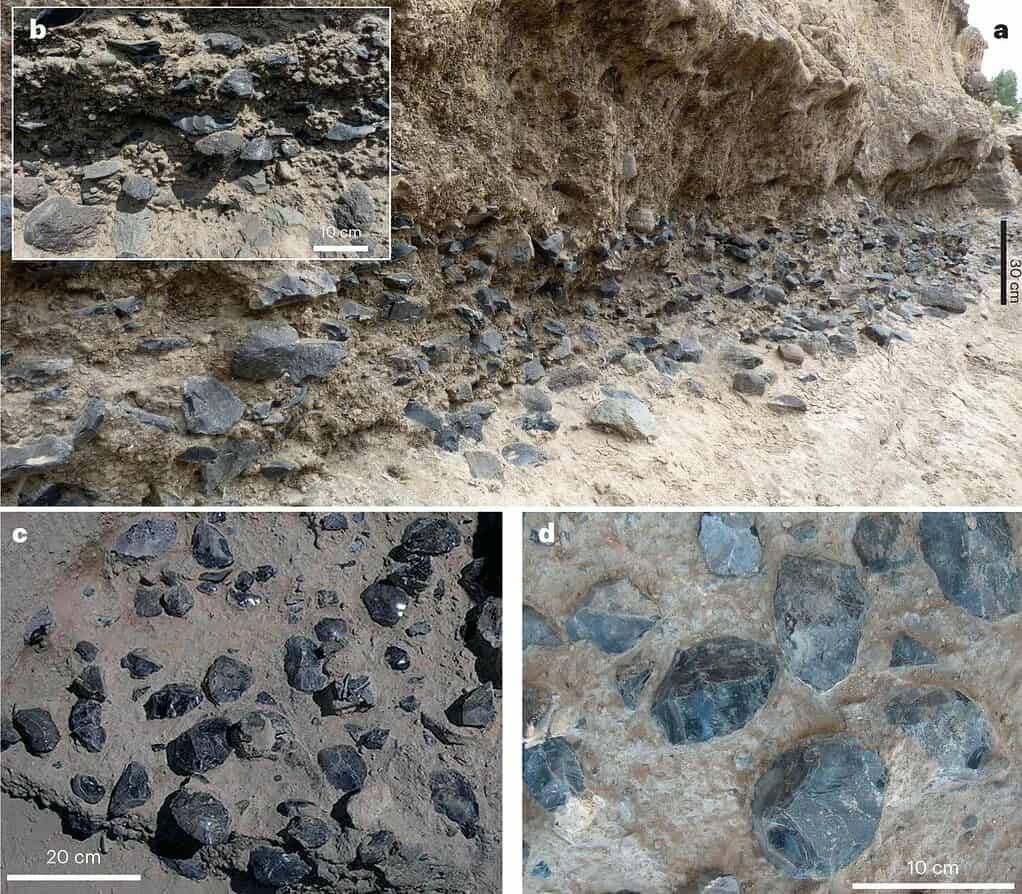
An international team of archaeologists have made a breathtaking find in Ethiopia’s Awash valley, one of the most important paleontological sites in the world. Alongside a river valley, researchers uncovered a trove of nearly 600 handaxes made from obsidian, many of which are about 1.2 million years old.
These tools exhibit a remarkable level of standardization, suggesting the site was home to a workshop where human ancestors manufactured flints meant for hunting, butchering caught game, processing animal hides, and all manners of practical activities that required a sharp blade or tip.
Previously, the oldest knapping workshops had been dated in Europe, some 750,000 years ago, meaning the new findings essentially double the range of time in which hominins performed such activities.
A razor-sharp glass gifted by nature and shaped by humans
The Pleistocene epoch, spanning from 2.6 million to 11,700 years ago, was a time of immense geological and biological change. It was also a period of rapid human evolution, marked by the development of stone tools and the spread of our early ancestors across the globe. One of the most intriguing materials used for toolmaking during this time was obsidian, a type of volcanic glass.
Obsidian is formed when molten lava cools rapidly, leaving no time for mineral crystals to form. The result is a naturally occurring glass with a razor-sharp edge. This made it an ideal material for cutting and shaping, and our ancestors took advantage of its properties by crafting it into a variety of tools, from knives and scrapers to arrowheads and spears.
During the early to mid-Pleistocene, the landscape around the Awash valley was seasonally flooded, and each time the nearby meandering river deposited considerable quantities of obsidian cobbles. Our human ancestors that inhabited this valley would have come across them and some individuals must have immediately recognize the potential of the minerals’ sharp cutting edges and tried to exploit it.
But researchers from Spain, France, and Germany were stunned to find that obsidian tool-making was active this early in prehistory. It all started with an ancient handaxe buried under a layer of sediment at the Melka Kunture site. But they soon found more — about 600 in total, all but three of which were made of the prized obsidian.
All of the handaxes had been crafted in a very similar manner, in which a hard, pointed tool, possibly a hammerstone, strikes the brittle obsidian at a controlled angle, causing a piece to break off in a desired shape. The knapper could then refine the shape further by making successive strikes in a specific pattern, removing small flakes to create the desired edge or form. This method was used to create a variety of tools, including knives, scrapers, arrowheads, and spears. However, the trove or artifacts reported in the study are all handaxes, prehistoric stone tools with two sharp faces that were held with one bare hand rather than being attached to a handle.
Dated to 1.2 million years ago, these axes are nearly twice as old as the previously oldest handaxe workshops unearthed thus far. However, it is unclear which hominin ancestor was the craftsman. Most likely, the obsidian tools were shaped by Homo erectus, the oldest known early humans to have possessed modern human-like body proportions with relatively elongated legs and shorter arms compared to the size of the torso. Homo erectus is believed to have been extant between about 1.89 million and 110,000 years ago.
The researchers highlight the fact that tool-making and material selection for such purposes involves a very high-order level of planning and imagination, showing that our earliest ancestors were perhaps much more intellectually resourceful than meets the eye.
“We argue that at Simbiro III, hominins were doing much more than simply reacting to environmental changes; they were taking advantage of new opportunities, and developing new techniques and new skills according to them,” the researchers wrote in the journal Nature Ecology and Evolution.



